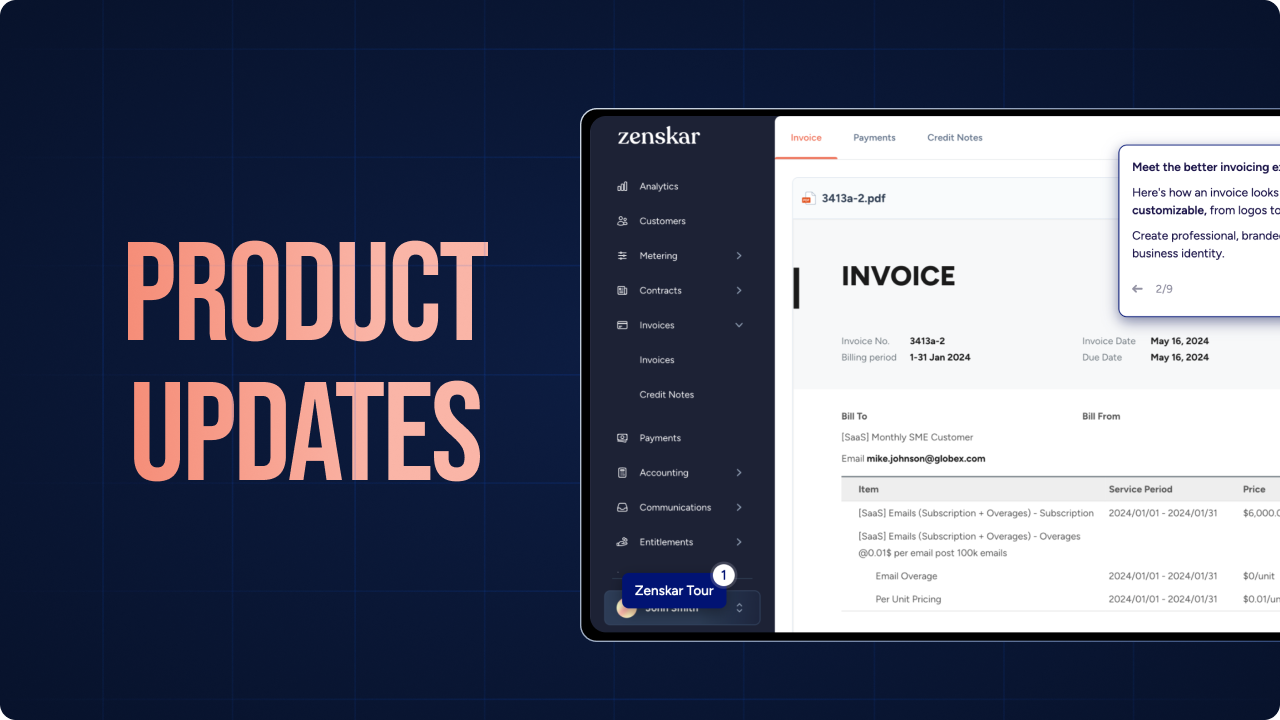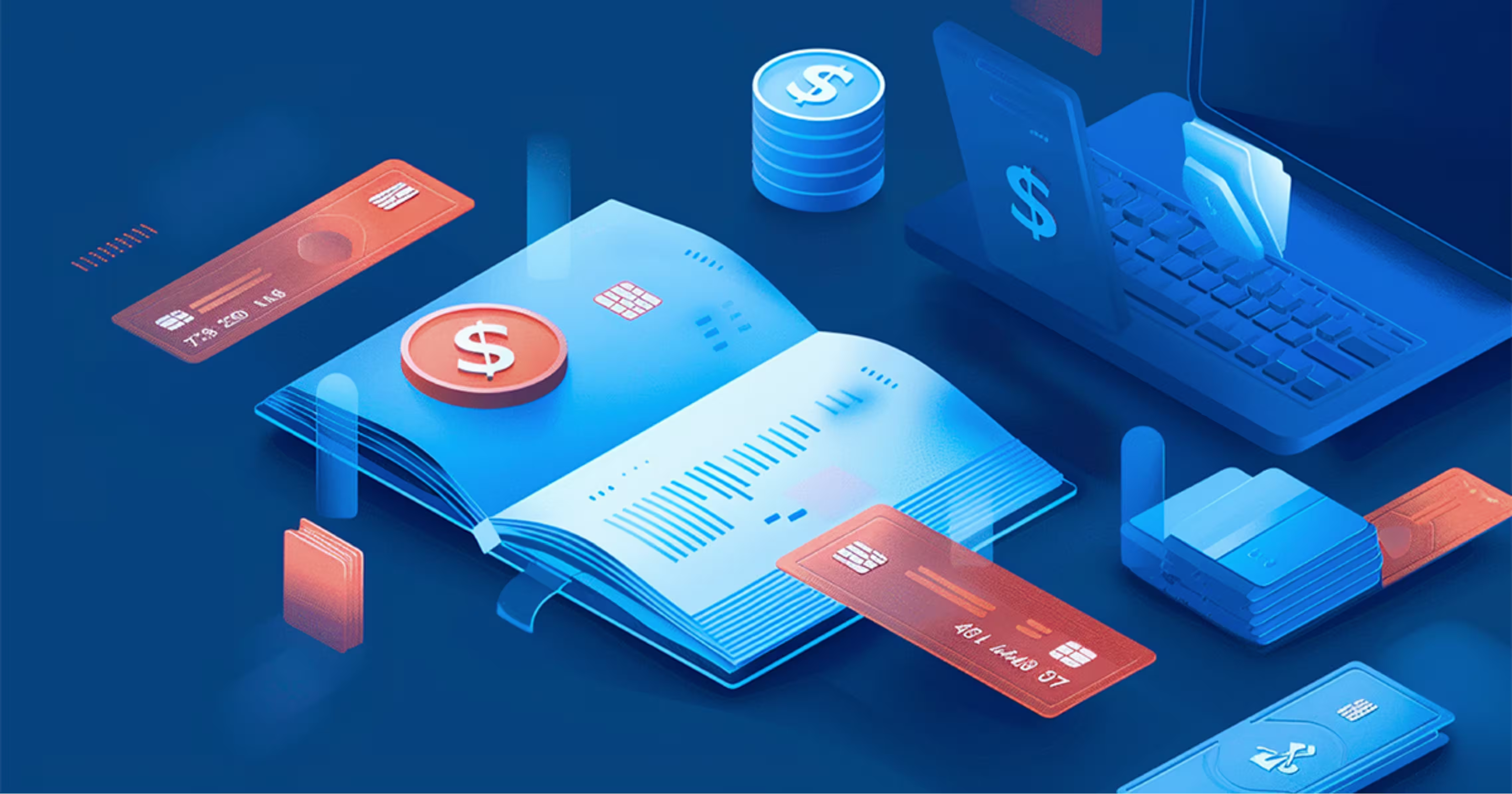Subscription management: Benefits, process, strategies, tools

Imagine a SaaS company offering project management software that uses a subscription management platform to streamline its operations. When a new customer signs up, the platform handles the entire onboarding process, including account setup and payment processing. Throughout the subscription period, it automatically manages monthly billing, adjusts for plan changes, and securely processes payments. This creates a seamless and efficient buying experience, fostering customer loyalty and driving sustained revenue growth.
Beyond billing, the platform integrates with key pieces of the organization's tech stack—like CRM or marketing automation tools—to optimize the customer experience across all touchpoints, creating a one-of-a-kind relationship with the business.
Mastering subscription management is no longer an operational advantage—it’s a strategic imperative. By optimizing revenue operations, reducing churn through data-driven insights, and unlocking upselling opportunities, businesses can achieve sustainable growth. To succeed, they need the right tools and strategies. Dive deeper into our blog to learn how subscription management works, what to look for in a software, and discover the best solutions for long-term success.
Subscription management vs. subscription pricing vs. subscription billing
This table highlights the distinct yet complementary roles of subscription management, subscription pricing and subscription billing in a SaaS business.
Why should you have a subscription business?
For B2B SaaS companies, the subscription model is more than just a revenue strategy—it’s a way to deliver continuous value, build lasting customer relationships, and scale efficiently.
1. Ability to bundle products and services
B2B SaaS companies can bundle multiple tools or features into a single subscription, creating a comprehensive solution for customers.
Example: Microsoft 365 offers a suite of productivity tools (Word, Excel, Teams, etc.) under one subscription, eliminating the need for businesses to purchase individual software licenses.
2. Greater lifetime value from every customer
Subscriptions encourage long-term engagement, increasing customer lifetime value (CLTV).
Example: Zoom exemplifies this through upselling to higher-tier plans and add-ons like Zoom Phone and large meeting capabilities. It also offers regular updates, new features (like Zoom Rooms and Webinars), and integrations with Slack and Microsoft Teams, ensuring businesses remain invested as their needs grow.
3. Greater revenue predictability
Recurring revenue from subscriptions provides financial stability, making it easier to forecast and plan for growth.
Example: Adobe transitioned from selling licenses for software like Photoshop to offering Adobe Creative Cloud, a subscription-based service that provides continuous updates and cloud storage. This shift increased consistent cash flow.
4. Better entry-level pricing with scalable features
Subscriptions allow B2B SaaS companies to offer affordable entry-level plans while upselling and cross-selling premium features as customers grow.
Example: HubSpot provides a free CRM with basic features, then upsells marketing, sales, and service hubs to businesses as they expand their needs.
How does subscription management work?
Step 1: Customer sign up and onboarding
A subscription management platform:
- presents flexible pricing plans with clear details on features, pricing, and billing frequencies (monthly/quarterly/annual)
- guides the customer through account setup, collecting necessary details (e.g., company name, number of users, payment information)
- automatically generates an invoice and processes the payment securely via integrated payment gateways (e.g., Stripe, PayPal)
- sends a welcome email with login credentials and instructions to get started
Outcome: The customer is onboarded quickly and seamlessly, with minimal manual intervention.
Step 2: Subscription activation and usage
A subscription management platform:
- tracks the customer’s usage patterns (e.g., number of projects created, active users).
- monitors subscription status (e.g., active, trial, or pending renewal)
- provides the SaaS company with insights into customer engagement and potential upsell opportunities (e.g., a customer nearing their user limit might need an upgrade)
Outcome: You can proactively engage with customers to ensure they’re deriving value from your software.
Step 3: Automated billing and payments
A subscription management platform:
- automatically generates and sends invoices to the customer
- processes payments securely and updates the customer’s billing status
- handles failed payments by sending reminders and retrying the transaction
- adjusts billing for any plan changes (e.g., upgrading from Basic to Pro) or add-ons (e.g., additional users)
Outcome: It ensures consistent cash flow without manual effort, while the customer enjoys a hassle-free billing experience.
Step 4: Plan changes and upgrades
A subscription management platform:
- allows the customer to self-upgrade through a user portal or notifies the sales team to assist with the upgrade
- automatically prorates charges or adjusts billing cycles to reflect the new plan
- updates the customer’s account with the new features or user limits
Outcome: The customer experiences a smooth transition to the new plan, and you capture additional revenue.
Step 5: Renewals and retention
A subscription management platform:
- sends automated renewal reminders to the customer
- offers incentives (e.g., discounts for annual commitments) to encourage renewal
- tracks renewal rates and identifies at-risk customers who may churn
- integrates with CRM tools to trigger personalized retention campaigns (e.g., emails or calls from the sales team)
Outcome: Your SaaS business maximizes renewal rates and reduces churn, ensuring steady recurring revenue.
Step 6: Churn or cancellation
A subscription management platform:
- captures the reason for cancellation (e.g., pricing, lack of use) through exit surveys or feedback forms
- automatically triggers win-back campaigns (e.g., special offers or discounts) to re-engage the customer
- updates the CRM system to reflect the cancellation and ensure follow-up by the sales or customer success team
Outcome: You gain insights into why customers leave and have opportunities to recover lost revenue.
Step 7: Integration with tech stack
A subscription management platform:
- integrates with CRM tools (e.g., Salesforce) to sync customer data and track interactions. Platforms like the Salesforce-native Salesforce SMS App enable SaaS companies to automate critical communications—like renewal reminders, usage alerts, or upgrade prompts—directly within Salesforce, improving retention and billing outcomes.
- connects with marketing automation tools (e.g., HubSpot) to trigger personalized campaigns based on customer behavior (e.g., upsell offers, renewal reminders)
- links with analytics tools to provide insights into subscription performance, revenue trends, and customer engagement
- integrates with task management software (e.g., Nifty, Asana, ClickUp) to align internal workflows across finance, product, and customer success teams, ensuring timely execution of subscription-related tasks and follow-ups
Outcome: You create a unified, data-driven approach to customer management.
Step 8: Reporting and analytics
A subscription management platform:
- provides real-time dashboards with key metrics like MRR (Monthly Recurring Revenue), ARR (Annual Recurring Revenue), churn rate, and customer lifetime value (CLV)
- tracks usage patterns and identifies trends (e.g., which features drive the most engagement)
- generates financial reports for forecasting and decision-making
Outcome: Your B2B SaaS company gains actionable insights to optimize pricing, improve retention, and drive revenue growth.
What do you look for in a subscription management software?
When evaluating subscription management software, businesses should prioritize the following features:
- Plan and pricing management: The ability to create, manage, and present flexible pricing plans (e.g., tiered plans, usage-based pricing, add-ons, freemium, annual vs. monthly billing) to customers.
- Subscription lifecycle management: End-to-end management of a customer’s journey, from sign-up to renewal or cancellation.
- Dunning management: Automated handling of failed payments, including retries, reminders, and notifications to customers.
- Trial, discount and coupon management: A tool to create and manage trials, discounts, and promotional campaigns.
- Entitlement management: Controls access to features or services based on the customer’s subscription plan to ensure customers only access what they’ve paid for, preventing revenue leakage.
- Subscription reports: Real-time analytics and reporting on key metrics like MRR (Monthly Recurring Revenue), ARR (Annual Recurring Revenue), churn, and CLV.
- Self-serve customer portal: A portal where customers can manage their subscriptions, update payment details, and view invoices.
- Integration with existing tech stack: Seamless integration with CRM (e.g., Salesforce), marketing automation (e.g., HubSpot), and accounting tools (e.g., QuickBooks).
- Security features: Compliance with security standards like PCI DSS (Payment Card Industry Data Security Standard) and encryption of sensitive data.
- Revenue recovery management: A tool to recover lost revenue from failed payments, churned customers, or billing errors.
10 best subscription management software
If you need help choosing the best subscription management software, our guide compares the top solutions to find the right fit.
We’ve categorized them by approach:
- Usage-based tools: Zenskar, Maxio, and OneBill (ideal for usage-based pricing models).
- Traditional subscription tools: Stripe, Chargebee, Zuora, and Recurly (best for fixed pricing).
- Merchant-of-record (MoR) services: Paddle, Lemon Squeezy, and FastSpring (perfect for outsourcing payments and compliance).
Grow your subscriptions without limits with Zenskar
Here are some ways that Zenskar can automate subscription management:
- Drafts contracts with custom billing periods, discounts, and payment options and speeds up deal closures
- Sets up custom dunning sequences to reduce failed payments and involuntary churn
- Schedules payment reminders considering your customer’s location and timezone and increases open rates
- Adds custom payment links to invoices to speed up payment collection and reduce friction
- Launches a self-serve portal so your customers can update their subscriptions, purchase credits, and download invoices
- Real-time insights into key metrics like MRR, ARR, churn, and CLV
All of this and more — without any engineering effort.
But what’s even better? Zenskar separates metering from billing. This ensures that usage data is not aggregated at source, as is the case with other platforms. Rather, you can send individual usage data to Zenskar.

Source: Zenskar
Not only does this give you more flexibility when it comes to generating detailed invoices, but it also gives you the freedom to experiment with your pricing strategy.
As a result, globally leading SaaS companies turn to Zenskar to build a successful recurring subscription billing software.
Ready to see how Zenskar can transform your subscription management?
👉 Take an interactive product tour, or
👉 Book a custom demo
Switch to zero-touch FinOps with Zenskar
Vertice closed books 70% faster with Zenskar
We launched our product 4 months faster by switching to Zenskar instead of building an in-house billing and RevRec system.

Frequently asked questions
Subscription management is the process of handling recurring billing, customer subscriptions, and revenue operations to ensure seamless onboarding, billing, and retention for businesses.
A subscription management software automates subscription workflows, including billing, invoicing, dunning, and customer lifecycle management, to streamline operations and improve customer experience.
For businesses: Automates billing, reduces churn, and improves revenue predictability. For customers: Offers flexible plans, seamless payments, and self-service options.
Flat-rate, tiered, usage-based, freemium, and hybrid pricing models can all be managed efficiently with a subscription management software.
Zenskar automates billing, dunning, and invoicing, while offering real-time insights and a self-serve portal for customers. It also separates metering from billing for flexible pricing strategies.














%20be%20truly%20invisible_.webp)









